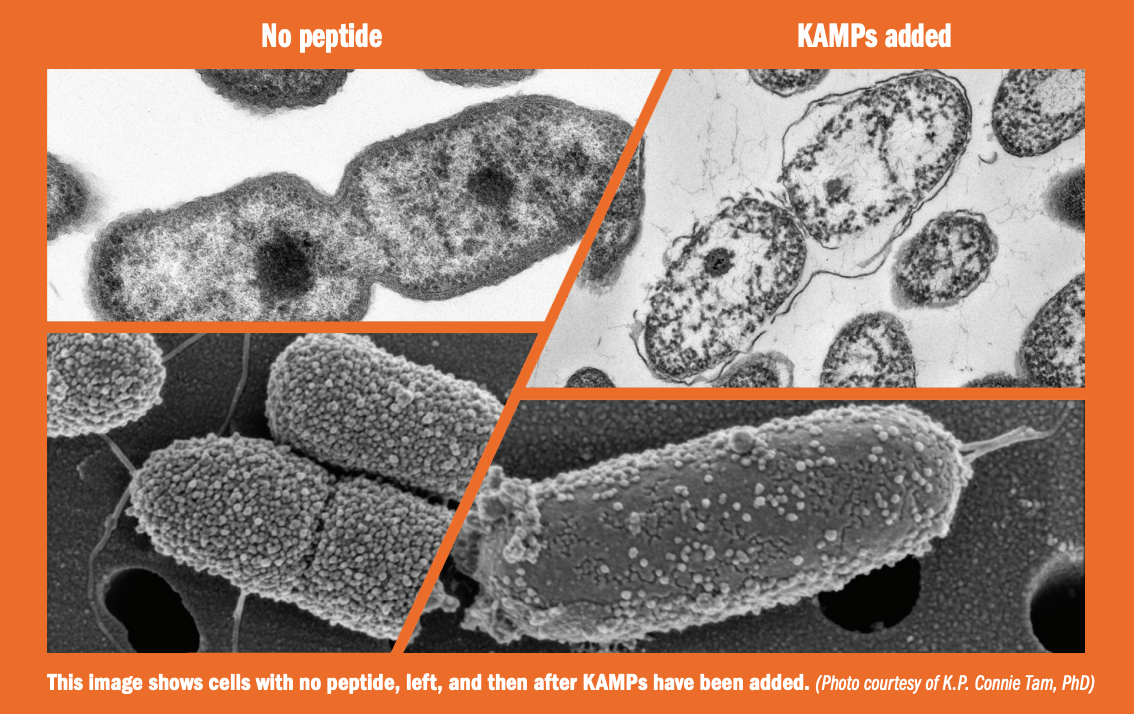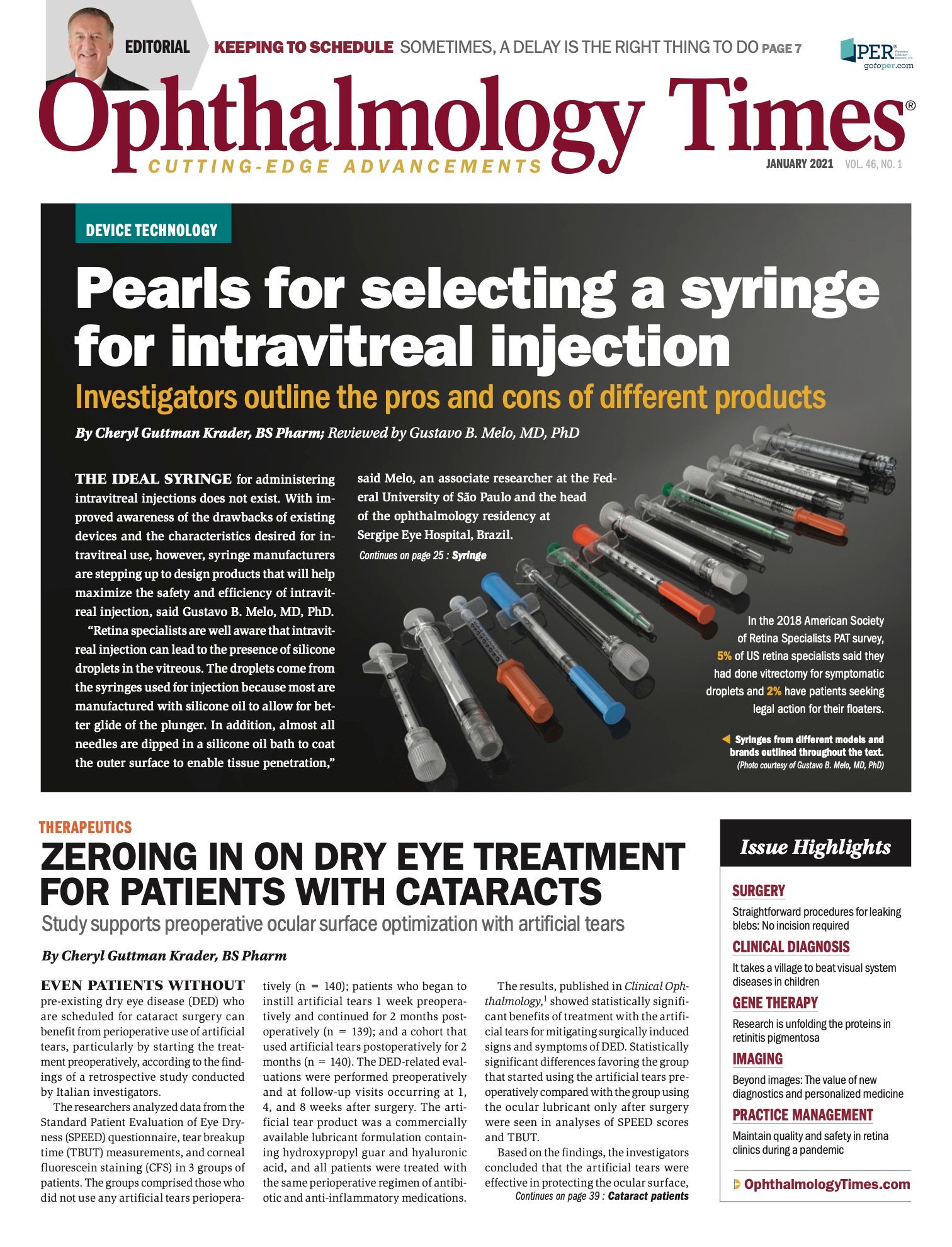Publication
Article
Digital Edition
Harnessing 1-2 punch of KAMPs for corneal infection, inflammation
Author(s):
Peptides offering ophthalmologists a potential treatment option for keratitis.

This article was reviewed by K.P. Connie Tam, PhD
Keratitis is a common presentation in clinics, and some cases can threaten vision. For the most serious cases, keratin 6A (KRT6A)-derived antimicrobial peptides (KAMPs) may answer the need for adequate therapy, an effective option against various bacterial pathogens that cause keratitis.
A second benefit of KAMPs that was recently discovered is that they can inhibit production of cytokines from white blood cells and suppress pathologic cell recruitment to the inflamed cornea, according to K.P. Connie Tam, PhD.
It also underscored the need for effective antimicrobial therapies in cases that are unresponsive to antibiotics.
Related: Confocal microscopy key to diagnosing infectious keratitis
Part of the problem is the reduction of the effectiveness of classic antibiotics because of resistance by the 2 most common pathogens, Pseudomonas aeruginosa and Staphylococcus aureus, she said.
The resistance will not abate until new antibiotics are clinically available. The other part of the problem is that the drugs are too similar to existing ones.
Tam also underscored the importance of moving away from traditional ophthalmic steroids because of their adverse effects, although they do have a use in certain cases.
She is associate staff at the Cleveland Clinic Cole Eye Institute and Lerner Research Institute, and an assistant professor of ophthalmology at the Cleveland Clinic Lerner College of Medicine of Case Western Reserve University, Cleveland.
Related: Are posterior corneal curvature changes culprit in hyperopic shifts?
Human KAMPs
One area Tam and colleagues have focused on is developing novel anti-infective and anti-inflammatory drugs. KAMPs are fragments that belong to the keratin 6A protein, a building block that forms a filament network that helps maintain structure in epithelial cells.
The investigators found that when KAMPs are added to corneal epithelial cells infected with bacteria, the bacteria become inactivated. Tam demonstrated the severe damage that KAMPs inflicted on P aeruginosa and S aureus bacterial cell envelopes in scanning and transmission electron microscopy images.
The investigators also showed, in an in vitro study, the decreased inflammation that KAMPs can achieve by suppressing cytokine secretion from murine neutrophils and macrophages in a dose-dependent manner.
Addition of KAMPs to these cells under stimulation with lipopolysaccharide (LPS) and lipoteichoic acid (LTA) significantly reduced quantities of cytokines, such as tumor necrosis factor alpha (TNFα), interleukin 6, and chemokine ligands 1 and 2.
Related: PACK-CXL researchers continue to clear hurdles of topical drugs
When KAMPs were instilled in human corneal epithelial cell culture and live mouse corneas, no toxicity was observed, compared with samples bearing the damage caused by a common antimicrobial preservative benzalkonium chloride.
“Overall, KAMPs appear to be nontoxic to the eye,” Tam said.
In a mouse model of corneal disease, KAMPs were found to suppress noninfectious inflammation induced by inactivated P aeruginosa and S aureus.
In this model, the KAMP eye drops were administered before or after the induction. After 24 hours, corneal cytokines were measured and the same effect was seen as in vitro.
“KAMP eye drops reduced inflammation in vivo by suppressing cytokine production and immune cell infiltration,” Tam said.
In a wound-healing model, KAMP eye drops suppressed inflammation and accelerated the epithelial wound closure compared to the control peptide.
In a mouse model of corneal infection, the groups were infected with P aeruginosa and S aureus.
Related: Returning to baseline post-corneal collagen crosslinking for keratoconus
After 24 hours, 1 group was untreated as control and the other group was treated with KAMP drops 3 times daily for 3 days. KAMPs eliminated most bacteria and reduced disease severity for the infected corneas, controlling the infection.
Tam summarized the key points in this line of investigation. The global increase in antibiotic resistance poses a serious risk of vision loss in patients with ocular infections. Development of a new class of antibiotics is critical.
In a mouse model of sterile corneal inflammation, topical KAMPs suppressed LPS- and LTA-induced releases of cytokines accompanied by neutrophil and macrophage infiltration.
A mouse model of corneal wound healing indicated that topical KAMPs accelerate epithelial wound closure. A mouse model of corneal infection showed that topical KAMPs blocked infection by killing the bacteria and suppressed inflammation by reducing cytokine production and immune cell infiltration.
Read more by Lynda Charters
--
K. P. Connie Tam, PhD
e:tamk@ccf.org
Tam is an inventor designated on a patent for KAMPs.

Newsletter
Don’t miss out—get Ophthalmology Times updates on the latest clinical advancements and expert interviews, straight to your inbox.





